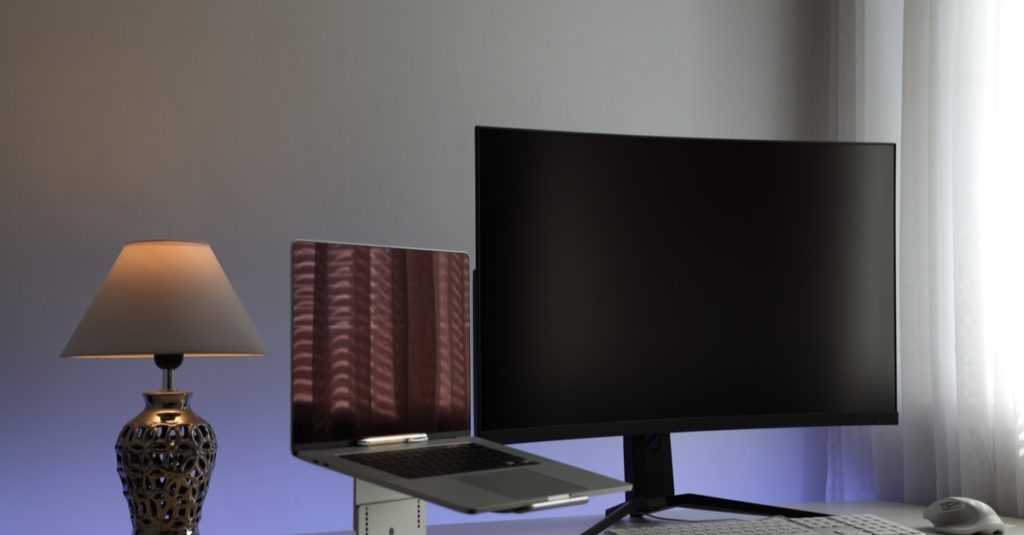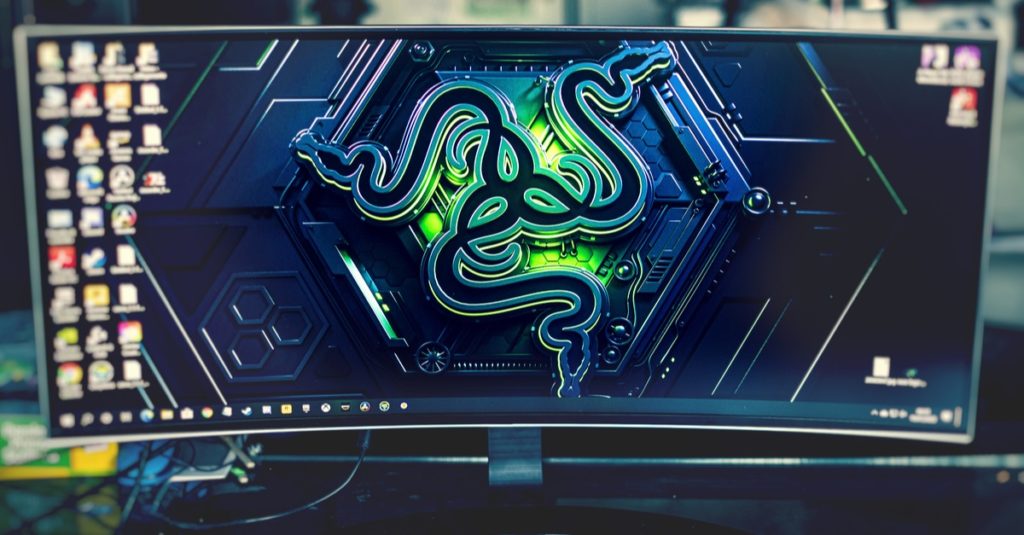Curved monitors are an eye-catching and trendy piece of equipment that many people are pivoting toward. If you are interested in a curved monitor but aren’t sure if it will be adequate for your line of work, read this guide!
Knowing the benefits and downsides of curved monitors will give you an idea of whether they can work for you or not.
Quick Answer
No, curved monitors are not necessarily better for office work.
They aren’t the worst thing for office work, but there are a few reasons and situations that make a curved monitor inconvenient and ineffective for someone performing office tasks.
What Is a Curved Monitor?
A curved monitor has a concave surface rather than the standard flat screen most people use. The center of the screen curves away from you while the sides of the screen curl in toward you.
These monitors are excellent for solo work in which you’re fully engaged, or for gaming to have a more immersive experience. The curved monitor has become very popular for large TVs, especially for people that enjoy watching sports and want to feel they’re at the game.
Benefits of a Curved Monitor

There are benefits of using a curved monitor at work that may apply to you. If you feel these benefits would enable you to be more productive and work more comfortably, a curved monitor can be a great upgrade for your workstation.
Immersion
The main benefit of a curved screen is how it sucks you into the monitor. Whether you are watching a movie or editing an article, the curved screen helps you to fully engage and zero in on the task at hand.
Curved monitors can be a massive asset to people that find their eyes wandering a lot and getting distracted by other things happening in the office. A curved monitor helps keep you focused.
Image Depth
The curved monitor makes images look more detailed because of the concave pixels. As mentioned, you can view things in a more immersive way and can edit photos with extreme precision.
3D Effect
Even without those funny glasses, the curved monitor can add another dimension to two-dimensional images. Because the sides curve in, it tricks your brain into thinking the edges are your peripheral vision.
This effect makes viewing images and videos a new experience and can help you to notice things you have missed on a flat-screen.
Comfortable on Your Eyes
If you spend all day staring at a screen, you know the kind of strain this puts on your eyes. But a curved monitor helps reduce this strain by making the screen easier to view. The curved sides are easier to focus on because your entire line of vision is occupied.
Even when focusing and sitting close to a screen, your eyes still work to process peripheral information. This effort made by your eyes tires them out much quicker and can cause headaches. But a curved monitor can be a cool solution for this.
No Glare or Reflections
Office workers may have to deal with frustrating glares or reflections on their monitors. If you work in an office, you likely don’t have the option to move your desk or computer to a different location. With a curved monitor, there is no flat surface for glares or reflections to bounce off, eliminating them.
Stylish
Not a huge benefit, but these monitors do look super swanky. Flat monitors are so yesterday, but the curved monitors are ye-catching and high-end. You’ll be the envy of all your coworkers and friends and feel like you own the monitor of the future!
Downsides of a Curved Monitor

Curved monitors aren’t for everyone. This is a breakdown of the downsides of curve monitors and reasons you shouldn’t use one.
User Must Be Centered
Because of the concave design, you have to sit directly in the center of the screen to use it. The same reason the monitor eliminates reflection and glares is why you must be centered. If you sit to the side, you can’t see the full screen.
For people that work on team projects or move around their desk and office area a lot, this can be very inconvenient. It also won’t work for people that turn their monitors often to show things to clients, coworkers, or superiors.
Not Ideal For Multi-Monitor Set Up
Since the user has to sit right in the center of the monitor, curved screens do not work well in multi-monitor setups. You won’t be able to see the far edges of the screen unless the monitors are smaller than 28”. You are better off buying one larger curved monitor or sticking with multiple flat monitors.
Bad For Graphic Design
If you are a graphic designer or video editor, you should avoid curved screens. While you get an immersive editing and designing experience, the final product may look warped or disappointing on a flat monitor. This issue can slow down production and execution times, letting down clients and missing deadlines.
Is a Curved Monitor Right For Me?
Digital artists, photographers, and video editors should avoid curved monitors. They will warp your work and make it more difficult to edit. But for other office workers, curved monitors offer more real estate and a more immersive experience.
They’re excellent for people that are easily distracted or have a million pages open on their computer at all times. It helps to view the monitor you are considering in-person, as that will give you a feel for what day-to-day use might be like.
Conclusion
Odds are, you’ll enjoy the benefits of curved monitors offer unless you fall under one of the professions we deemed anti-curved monitor.
If you use your monitor for both work and play, you’ll fall in love with the immersive gaming experience, and likely become more productive at work too! So, don’t be afraid to leap into the curved monitor world!
FAQs
Are curved monitors better for gaming?
Yes! Curved monitors make your gaming experience stellar, fully immersing you in the game and making it easier to monitor your peripherals in the game. Many gamers say curved monitors help them game better and are more comfortable on their eyes when playing for long hours.
Are curved monitors more expensive than flat ones?
Yes, they are significantly pricier. A 35” curved monitor costs between $390 and $800. But a 35” flat monitor usually costs between $150 and $400.